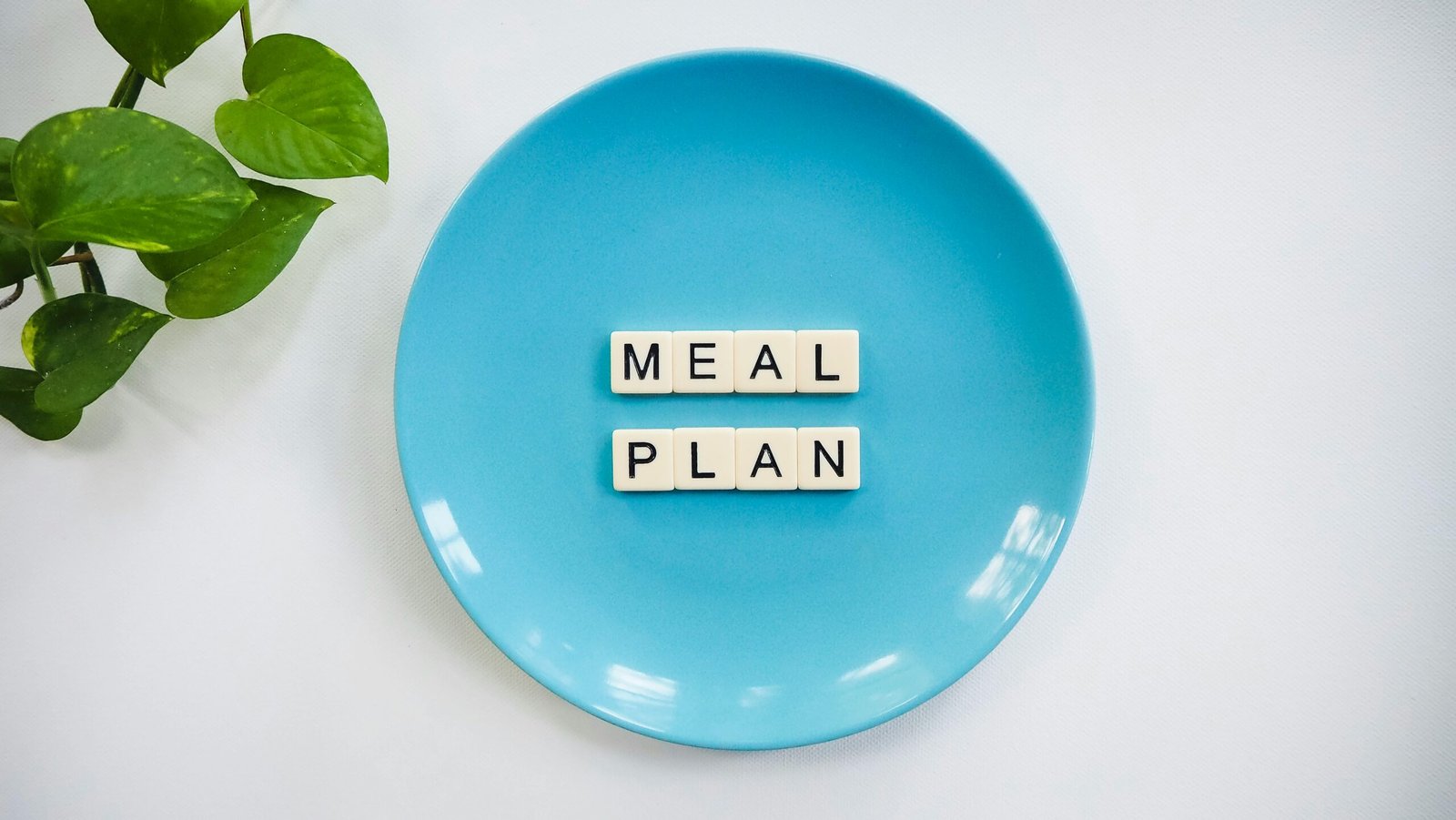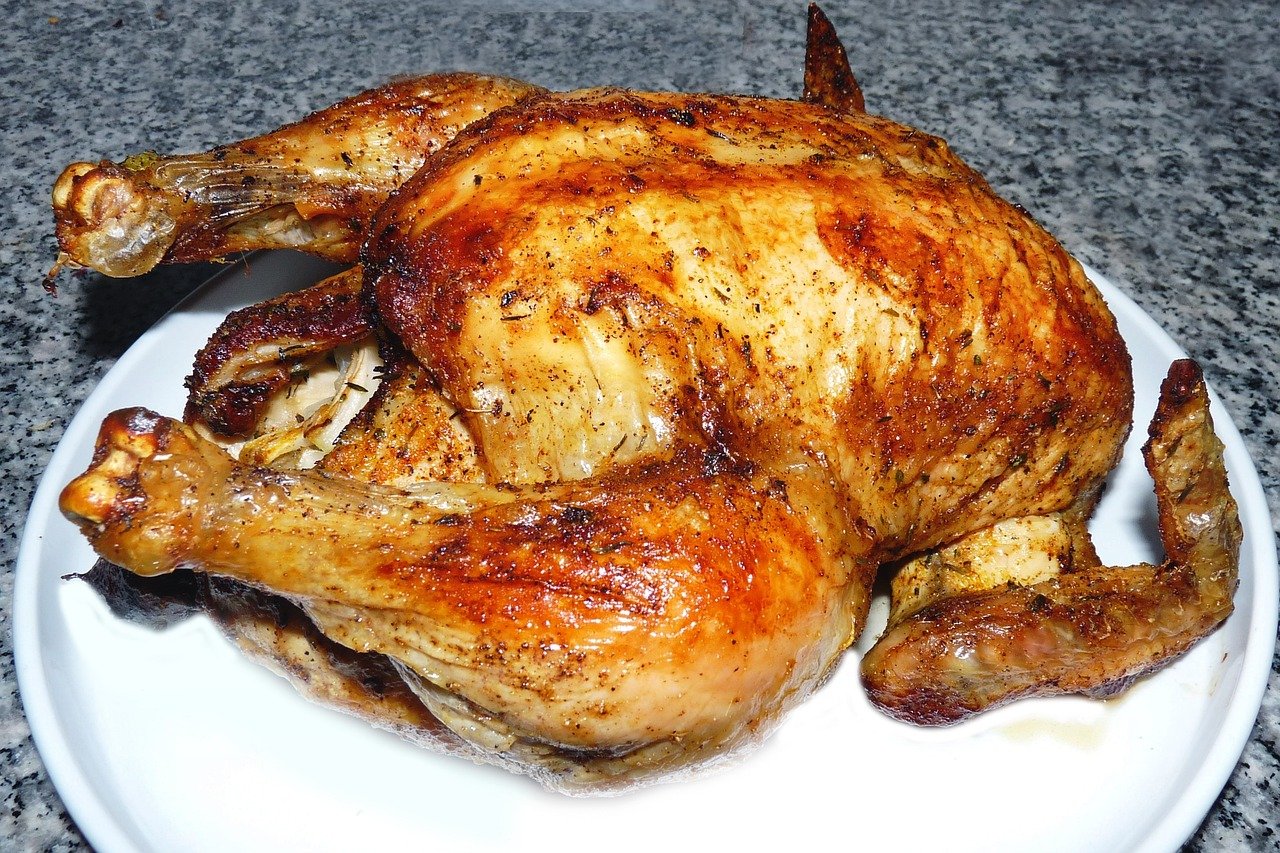How can I make a custom diet plan easily in 2024?

Creating a custom diet plan might sound like a daunting task, but it’s easier than you think. A well-crafted diet plan tailored to your unique needs and preferences can significantly improve your health, energy levels, and overall well-being. Ready to dive in? Let’s break it down step-by-step.
Understanding Your Goals:
Your goals will guide the structure and specifics of your diet plan, ensuring it aligns with your desired outcomes. Here are common goals and how to approach each:
1. Weight Loss
- Macronutrient Balance: High protein to preserve muscle mass, moderate carbs, and healthy fats.
- Meal Frequency: Regular meals to avoid extreme hunger and binge eating.
2. Muscle Gain
- Objective: Increase muscle mass and strength.
- Strategy:
- Caloric Surplus: Consume more calories than you burn, focusing on nutrient-dense foods to support muscle growth.
- High Protein Intake: Ensure adequate protein (1.2-2.2 grams per kilogram of body weight) to support muscle repair and growth.
- Strength Training: Combine your diet with a consistent strength training regimen.
3. General Health and Wellness
- Objective: Maintain or improve overall health, energy levels, and well-being.
- Strategy:
- Balanced Diet: Include a variety of foods from all food groups to ensure you get essential nutrients.
- Hydration: Drink enough water throughout the day.
4. Specific Health Conditions
- Objective: Manage or improve symptoms related to health conditions such as diabetes, hypertension, or digestive issues.
- Strategy:
- Tailored Nutrients: Adjust nutrient intake based on medical advice (e.g., low sodium for hypertension, low glycemic index foods for diabetes).
- Avoid Trigger Foods: Identify and avoid foods that exacerbate your condition.
5. Athletic Performance
- Strategy:
- Carbohydrate Loading: Increase carb intake before events to maximize glycogen stores.
- Protein and Recovery: Ensure adequate protein intake for muscle recovery post-exercise.
- Hydration and Electrolytes: Maintain proper hydration and replenish electrolytes lost through sweat.
6. Dietary Preferences or Restrictions
- Objective: Adhere to personal or ethical dietary choices such as vegetarianism, veganism, or gluten-free diets.
- Strategy:
- Nutrient Substitutes: Ensure you get all necessary nutrients through alternative sources (e.g., plant-based proteins for vegetarians/vegans).
- Food Variety: Include a wide variety of foods to prevent nutrient deficiencies.
Tips for Setting Achievable Goals:
- Be Specific: Clearly define what you want to achieve (e.g., lose 10 pounds in 3 months).
- Set Realistic Expectations: Ensure your goals are attainable within a reasonable timeframe.
- Stay Flexible: Be prepared to modify your goals based on your body’s response and any new insights.
Assessing Your Current Diet:
Assessing your current diet is a crucial step in creating a custom diet plan. It helps you understand your eating habits, identify areas for improvement, and set a baseline for your new diet. Here’s how to effectively assess your current diet:
1. Keep a Food Diary
- Details to Include:
- What You Eat: List all foods and beverages.
- When You Eat: Record the time of each meal and snack.
- Portion Sizes: Estimate or measure the quantity of each item.
- Location and Context: Note where you were and what you were doing while eating (e.g., at home, at work, watching TV).
- Feelings and Mood: Document how you felt before and after eating (e.g., hungry, stressed, satisfied).
2. Analyze Your Food Diary
- Identify Patterns: Look for trends in your eating habits, such as frequent snacking, late-night eating, or skipping meals.
- Evaluate Nutrient Intake: Assess whether you’re getting a balanced intake of macronutrients (carbohydrates, proteins, fats) and essential micronutrients (vitamins and minerals).
- Caloric Intake: Estimate your daily calorie consumption and compare it to your estimated caloric needs (based on your goals).
3. Assess Portion Sizes
- Compare to Standards: Use standard serving sizes to evaluate if you’re eating appropriate portions.
- Adjustments: Identify areas where portion sizes may need to be increased or decreased.
4. Evaluate Food Choices
- Whole Foods vs. Processed Foods: Determine the proportion of whole, unprocessed foods (fruits, vegetables, whole grains, lean proteins) versus processed and packaged foods.
- Variety and Balance: Ensure your diet includes a wide variety of foods to cover all essential nutrients.
- Frequency of Indulgences: Note how often you consume high-sugar, high-fat, or high-salt foods.
5. Identify Triggers and Emotional Eating
- Stress and Boredom: Recognize if emotional states like stress, boredom, or happiness influence your eating habits.
- Situational Triggers: Identify situations that prompt unhealthy eating (e.g., social gatherings, work deadlines).
6. Evaluate Hydration
- Other Beverages: Note consumption of other beverages like coffee, tea, soda, and alcohol.
7. Consult with a Professional
- Dietitian or Nutritionist: Consider sharing your food diary with a dietitian or nutritionist for a professional evaluation and personalized advice.
Using Your Assessment:
After thoroughly assessing your current diet, use the insights gained to inform your custom diet plan. Here are some steps to follow based on your assessment:
Identify Areas for Improvement
- Replace Processed Foods: Swap processed snacks with healthier alternatives.
- Increase Nutrient Intake: Add more fruits, vegetables, and whole grains to your meals.
- Adjust Portion Sizes: Align portion sizes with recommended standards.
Set Realistic Goals
- Small Changes: Implement gradual changes rather than overhauling your diet all at once.
- Track Progress: Continue tracking your diet to monitor improvements and adjust as needed.
Plan Balanced Meals
- Macronutrient Distribution: Ensure each meal includes a balance of carbohydrates, proteins, and fats.
Knowing Your Nutritional Needs:
Understanding your nutritional needs is essential for creating a custom diet plan that supports your health goals. Here’s how to determine your nutritional requirements:
1. Calculate Your Caloric Needs
- Basal Metabolic Rate (BMR): The number of calories your body requires to maintain fundamental physiological functioning when at rest.
- Common Formulas: Harris-Benedict Equation or Mifflin-St Jeor Equation.
- Total Daily Energy Expenditure (TDEE): BMR adjusted for activity level.
- Activity Levels:
- Sedentary (little or no exercise): BMR × 1.2
- Moderately active (moderate exercise/sports 3-5 days/week): BMR × 1.55
- Very active (hard exercise/sports 6-7 days a week): BMR × 1.725
- Super active (very hard exercise/physical job): BMR × 1.9
- Activity Levels:
2. Determine Macronutrient Needs
- Proteins: Essential for muscle repair, immune function, and enzyme production.
- General Guideline: 10-35% of total daily calories.
- Specific Needs:
- Sedentary adults: 0.8 grams per kilogram of body weight.
- Active adults: 1.2-2.2 grams per kilogram of body weight (higher end for strength training).
- Carbohydrates: Primary energy source, especially important for brain function and physical activity.
- General Guideline: 45-65% of total daily calories.
- Specific Needs:
- Athletes: Higher end of the range to support energy demands.
- Low-carb diets: May aim for 20-50% of total daily calories.
- Fats: Necessary for hormone production, nutrient absorption, and cell structure.
- General Guideline: 20-35% of total daily calories.
- Specific Needs:
- Focus on healthy fats: Monounsaturated and polyunsaturated fats (e.g., olive oil, nuts, avocados).
- Limit saturated fats and avoid trans fats.
3. Ensure Micronutrient Adequacy
- Vitamins and Minerals: Essential for various bodily functions, from immune support to bone health.
- Common Nutrients:
- Vitamin D: Important for bone health; sources include sunlight exposure and fortified foods.
- Calcium: Necessary for bone health; sources include dairy products and leafy greens.
- Iron: Important for blood health; sources include red meat, beans, and fortified cereals.
- Vitamin C: Supports the immune system; sources include citrus fruits and vegetables.
- Fiber: Important for digestive health; sources include fruits, vegetables, and whole grains.
- Common Nutrients:
4. Tailor to Specific Health Conditions
- Diabetes: Focus on low-glycemic index foods to manage blood sugar levels.
- Hypertension: Reduce sodium intake and increase potassium-rich foods.
- Heart Disease: Emphasize omega-3 fatty acids, fiber, and antioxidants while reducing saturated fats and cholesterol.
5. Hydration
- General Guideline: Aim for 8-10 cups (2-2.5 liters) of water daily.
- Specific Needs:
- Increased needs during physical activity, hot weather, or illness.
- Monitor urine color as a hydration indicator (pale yellow is ideal).
Practical Steps to Meet Your Nutritional Needs
- Meal Planning: Design meals that include a balance of macronutrients and a variety of micronutrients.
- Portion Control: Use measuring cups, food scales, or visual cues to ensure appropriate portion sizes.
- Regular Monitoring: Track your food intake and adjust as needed based on progress and any changes in activity level or health status.
- Professional Guidance: Consult with a dietitian or nutritionist for personalized advice, especially if you have specific health conditions.
Calculating Your Caloric Needs:
To create a custom diet plan, you need to know how many calories your body requires daily. Start by calculating your Basal Metabolic Rate (BMR), which is the number of calories your body needs to maintain basic physiological functions at rest. Next, determine your Total Daily Energy Expenditure (TDEE), which includes all the calories you burn through daily activities and exercise. These calculations will help you understand how many calories you should consume to meet your goals.
Choosing the Right Foods
Whole foods are nutrient-dense and free from added sugars and unhealthy fats. Incorporating a variety of foods into your diet ensures you get a broad range of nutrients.
Meal Planning Basics
Meal planning is key to sticking to your diet. Structure your meals around your macronutrient needs and aim to eat at regular intervals throughout the day. This helps maintain your energy levels and prevents overeating. Decide how many meals and snacks you need each day based on your lifestyle and preferences.
Incorporating Food Preferences and Allergies
Your diet plan should reflect your tastes and any food allergies or intolerances you have. This makes it easier to stick to your plan and enjoy your meals. If you have specific dietary restrictions, look for creative ways to substitute ingredients without sacrificing flavor or nutrition.
Balancing Your Macronutrients
Balancing your intake of carbs, proteins, and fats is crucial for a healthy diet. The ideal ratio can vary depending on your goals. For instance, if you’re aiming to build muscle, you might need more protein, while a focus on endurance might require more carbs.
Creating a Weekly Meal Plan
Use your food diary insights to make healthier choices and incorporate a variety of foods. Planning ahead can save time and reduce stress during the week. Don’t forget to factor in leftovers, which can be a lifesaver on busy days.
Shopping and Meal Prep Tips
Make a grocery list when you’ve decided on your meal plan. Meal preparation might also help you save time and stay to your schedule. Set aside a few hours each week to prepare ingredients or cook meals in advance. Keep them in portion-size containers for easy access.
Staying Motivated and On Track:
Maintaining motivation and staying on track with your custom diet plan can be challenging but is crucial for long-term success. Here are strategies to help you stay committed and achieve your health and fitness goals:
1. Set Clear and Realistic Goals
- SMART Goals: Establish goals that are specific, measurable, attainable, relevant, and time bound.
- Example: “I will lose 10 pounds in 3 months by following my custom diet plan and exercising three times a week.”
2. Track Your Progress
- Food Diary: Continue using a food diary or a mobile app to log your meals and snacks.
- Measurements: Track changes in weight, body measurements, and other relevant metrics.
- Photos: Take regular progress photos to visually document your changes.
3. Plan and Prepare Meals
- Meal Prep: Set aside time each week to plan and prepare your meals. This reduces the temptation to make unhealthy choices.
- Healthy Snacks: Keep healthy snacks available to avoid reaching for unhealthy options when you’re hungry.
4. Stay Flexible
- Allow Flexibility: It’s okay to indulge occasionally. Allow yourself some flexibility to prevent feelings of deprivation.
- Adapt as Needed: Adjust your diet plan if you notice it’s not working for you or if your goals change.
5. Find Support
- Accountability Partner: Share your goals with a friend or family member who can provide encouragement and hold you accountable.
- Online Communities: Join online forums or social media groups focused on health and fitness for additional support and motivation.
6. Celebrate Small Wins
- Reward Yourself: Celebrate your accomplishments, no matter how minor. Give yourself non-food treats, such as new gym clothing or a massage.
- Acknowledge Progress: Recognize and appreciate the progress you’ve made towards your goals.
7. Stay Educated and Informed
- Nutrition Knowledge: Continuously educate yourself about nutrition and healthy eating habits.
- Stay Updated: Keep up with the latest research and trends in diet and nutrition.
8. Manage Stress and Sleep
- Stress Management: Use stress-relieving practices like meditation, yoga, or deep breathing exercises.
- Sleep: Ensure you get adequate sleep each night, as lack of sleep can negatively impact your motivation and decision-making.
9. Regular Physical Activity
- Exercise Routine: Incorporate regular physical activity that you enjoy into your routine.
- Variety: Mix different types of exercise to keep it interesting and prevent boredom.
10. Positive Mindset
- Stay Positive: Focus on the positive changes you’re making rather than any setbacks.
- Self-Compassion: Be nice to yourself and avoid negative self-talk.
Practical Tips for Staying on Track:
- Visual Reminders: Display reminders of your goals in prominent locations, such as on your refrigerator or bathroom mirror.
- Set Reminders: Use phone alarms or calendar alerts to remind you to eat healthy meals and snacks.
- Routine: Establish a daily routine that incorporates your meal times and exercise schedule.
Sample Daily Routine
- Mid-Morning:
- Healthy snack (e.g., a piece of fruit or a handful of almonds).
- Lunch:
- A nutritious dinner that includes lean protein, vegetables, and complete grains.
- Afternoon:
- A short walk or a stretch break.
- Healthy snacks (e.g., yogurt with berries).
- Evening:
- Dinner with a balance of protein, carbs, and healthy fats.
- Relaxation time (e.g., reading or a hobby).
- Night:
- Light evening snack if needed (e.g., a small serving of cottage cheese).
- Wind down with a calming bedtime routine.
- Have a balanced breakfast (e.g., oatmeal with fruits and nuts).
- Engage in morning exercise (e.g., a 30-minute walk or yoga session).
Consulting with Professionals:
If you’re unsure about creating a diet plan on your own, consider consulting a nutritionist. They can provide personalized advice and support. Additionally, there are many apps and online tools available that can help you track your progress and stay on track.
Conclusion:
Creating a custom diet plan is a manageable and rewarding process when approached systematically. By understanding your specific goals and needs, setting realistic objectives, and designing a personalized plan, you can ensure that your diet supports your health and wellness journey. With proper implementation, ongoing support, and adjustments as needed, you’ll be well on your way to achieving and maintaining your desired outcomes. Embrace the process, stay committed, and enjoy the benefits of a diet tailored just for you.
FAQs:
How often should I update my diet plan? It’s a good idea to review and adjust your diet plan every few months or whenever you experience significant changes in your health or lifestyle.
Can I make a diet plan for the whole family? Absolutely! Just consider each family member’s preferences and nutritional needs to ensure everyone is happy and healthy.
What if I don’t see results right away? Be patient. Stick with your plan, and make adjustments as needed based on your progress.
How do I handle eating out while on a custom diet plan? Plan by checking restaurant menus online. Look for healthy options, and don’t be afraid to ask for modifications to suit your diet.

Are there any tools or apps to help with creating a diet plan? Yes, there are many apps available that can help you track your food intake, plan meals, and monitor your progress. Some popular options include MyFitnessPal, Lose It!, and Cronometer.




